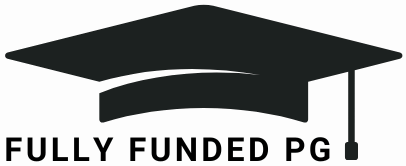Writing Statement of Purpose for International Scholarships
A Statement of Purpose (SOP) is one of the most critical components of an international scholarship application. It serves as a personal narrative that gives selection committees insight into your academic journey, career aspirations, and the motivations behind your pursuit of higher education.
Unlike a resume or transcript, which simply lists qualifications, a statement of purpose allows you to showcase your personality, passion, and vision. It provides a platform to articulate why you deserve the scholarship, how your background aligns with the program’s objectives, and what impact you hope to make in your field and community. A well-written SOP can be the deciding factor in securing funding, especially for highly competitive scholarships.
International scholarships such as Fulbright and Chevening scholarships usually receive thousands of applications each year from outstanding candidates worldwide. Many applicants have exceptional academic records and impressive achievements, making it challenging for committees to choose recipients.
What often sets successful applicants apart is a persuasive, compelling, and strategically crafted SOP. A strong SOP not only highlights your qualifications but also tells a cohesive story that connects your past experiences, present aspirations, and future goals. It demonstrates your ability to think critically, communicate effectively, and contribute meaningfully to your chosen field and society.
In this guide, we’ll break down five essential tips and writing hacks to help you write a winning Statement of Purpose for international scholarships.
1. Start with a Strong Hook (First Impressions Matter!)
The first paragraph of your SOP is critical. Scholarship committees read hundreds of applications, so your opening must grab their attention immediately. A dull introduction could cause them to skim through your essay, but a strong hook keeps them engaged.
How to Write an Attention-Grabbing Introduction:
- Start with a personal story or anecdote related to your academic journey.
- Use a thought-provoking question or a bold statement to intrigue the reader.
- Mention a defining moment that shaped your career aspirations.
Example of a Weak Opening:
“I have always been passionate about engineering, and I want to study in Germany to improve my skills.”
Example of a Strong Opening:
“As a child, I spent hours dismantling broken radios, fascinated by their inner workings. One evening, after repairing my first circuit board, I realized engineering was more than a field of study; it was my calling. This passion has driven me to pursue research in renewable energy, and the DAAD Scholarship offers the perfect platform to turn my ideas into impactful solutions.”
Pro Tip: Your opening should make the reader curious about your journey. If your introduction can make them think, “I want to know more about this person,” you’ve succeeded.
2. Clearly Define Your Academic and Career Goals
Scholarship committees don’t just fund students; they invest in future leaders and changemakers, so you have to prove you are more than a scholar but rather capable of changing the world for the better through the opportunities given to you. Your SOP must clearly outline your academic goals and how they align with your long-term career aspirations.
How to Effectively Present Your Goals:
- Short-Term Goals: What do you plan to achieve during your studies?
- Long-Term Goals: How will this scholarship contribute to your career and country?
- Why This Program? Explain why this specific university/scholarship is the best fit for your goals.
Example of a Strong Goal Statement:
“My research aims to develop low-cost solar panels to provide affordable electricity to underserved communities in Africa. Studying at [University Name] under the DAAD Scholarship will allow me to collaborate with leading experts in renewable energy and apply my findings to real-world solutions. Upon completion, I intend to return to my home country and establish a clean-energy startup, bridging the gap between research and implementation.”
Pro Tip: Avoid vague statements like “I want to help people” or “I want to be successful.” Be specific; define your impact, target audience, and measurable outcomes.
3. Show, Don’t Just Tell (Use Evidence & Achievements)
One of the biggest mistakes applicants make is listing achievements without storytelling. Instead of saying, “I have leadership skills,” show evidence of your leadership, explain past experience and examples, and even add evidence where possible. Scholarship committees value real-world examples over just generic statements.
How to Show Your Strengths Through Storytelling:
- Instead of saying you’re hardworking, describe a project where your hard work made a difference.
- Instead of listing your extracurricular activities, explain the impact they had on you and others.
Example of a Weak Statement:
“I have leadership experience because I was the president of my university’s science club.”
Example of a Strong Statement:
“As the president of my university’s science club, I led a team of 50 students to organize Africa’s first inter-university robotics competition. Managing logistics, securing sponsorships, and mentoring younger students in AI programming taught me the power of teamwork and resilience—skills I intend to apply to my research at [University Name].”
Pro Tip: Use the STAR Method (Situation, Task, Action, Result) to structure your examples. This keeps them concise and impactful.
4. Personalize Your Statement of Purpose for Each Scholarship
One common mistake is submitting a generic Statement of Purpose (SOP) to multiple scholarships. Selection committees can spot a copy-paste application from a mile away! Each scholarship has different values, so tailor your SOP to align with their specific mission and criteria.
How to Tailor Your SOP:
- Research the scholarship’s mission (e.g., Fulbright values cultural exchange, DAAD focuses on research and development).
- Mention specific professors, courses, or facilities at the university you’re applying to.
- Align your goals with the scholarship’s vision (e.g., If applying for Chevening, emphasize leadership and policy making).
Example of a Strong Personalization:
“The DAAD Scholarship’s commitment to fostering scientific collaboration aligns perfectly with my passion for research. Germany’s strong focus on green energy innovation, particularly at [University Name], provides the ideal environment for me to contribute to advancements in solar panel efficiency.”
Pro Tip: Use keywords from the scholarship’s official website in your SOP. This subtly reinforces your alignment with their vision.
5. Edit, Proofread, and Get Feedback
Even the best-written SOPs can be ruined by grammar mistakes and poor structure. Before submitting, thoroughly edit, proofread, and seek feedback. For this, you can consult superiors or even internet tools such as Grammarly and other grammar-checking/correction platforms and tools.
Editing Checklist:
- Check for clarity – Does every paragraph have a clear purpose?
- Cut out fluff – Remove repetitive words or unnecessary details.
- Fix grammar & spelling – Use tools like Grammarly or Hemingway Editor.
- Read out loud – If it sounds awkward, revise it.
- Get feedback – Ask a professor, mentor, or friend to review it.
Pro Tip: If you’re struggling with flow, try reading your SOP backward (sentence by sentence). This forces you to catch small errors you’d normally overlook.
Final Thoughts
Writing a compelling Statement of Purpose is more than just following a structured format; it’s an art that requires storytelling, strategy, and meticulous attention to detail. A strong SOP doesn’t simply list your achievements; it creates a narrative that convinces the selection committee that you are not just qualified but also a perfect fit for their program.
Your statement of purpose should reflect your passion, dedication, and long-term vision while making a personal connection with the values and mission of the scholarship. By crafting an SOP that is engaging, authentic, and purpose-driven, you significantly increase your chances of standing out in a highly competitive selection process.
To summarize the key elements of a successful SOP:
- Start with a strong introduction that immediately captures attention and sets the tone.
- Clearly define your academic and career goals, linking them to the scholarship’s mission.
- Use real-life examples to illustrate your strengths rather than making vague statements.
- Tailor your SOP for each scholarship, addressing specific requirements and expectations.
- Revise and refine—edit ruthlessly and seek feedback to ensure clarity, coherence, and impact.
A well-written Statement of Purpose can be the deciding factor between acceptance and rejection. It’s not just about proving that you deserve the scholarship; it’s about demonstrating why you belong in the program and how you will make the most of the opportunity.
Take your time to perfect your statement, refine your message, and tell a story that leaves a lasting impression. Approach it as an opportunity to showcase your unique journey and aspirations, and with careful planning and execution, you can make your application truly unforgettable.

